Hockey’s disgusting little habit
 By: Randy Turner
Posted:
Last Modified: | Updates
By: Randy Turner
Posted:
Last Modified: | Updates
Advertisement
Read this article for free:
or
Already have an account? Log in here »
To continue reading, please subscribe:
Monthly Digital Subscription
$0 for the first 4 weeks*
- Enjoy unlimited reading on winnipegfreepress.com
- Read the E-Edition, our digital replica newspaper
- Access News Break, our award-winning app
- Play interactive puzzles
*No charge for 4 weeks then price increases to the regular rate of $19.00 plus GST every four weeks. Offer available to new and qualified returning subscribers only. Cancel any time.
Monthly Digital Subscription
$4.75/week*
- Enjoy unlimited reading on winnipegfreepress.com
- Read the E-Edition, our digital replica newspaper
- Access News Break, our award-winning app
- Play interactive puzzles
*Billed as $19 plus GST every four weeks. Cancel any time.
To continue reading, please subscribe:
Add Free Press access to your Brandon Sun subscription for only an additional
$1 for the first 4 weeks*
*Your next subscription payment will increase by $1.00 and you will be charged $16.99 plus GST for four weeks. After four weeks, your payment will increase to $23.99 plus GST every four weeks.
Read unlimited articles for free today:
or
Already have an account? Log in here »
Hey there, time traveller!
This article was published 28/12/2013 (4371 days ago), so information in it may no longer be current.
The young man, just 20, uses a tin of tobacco a day. At night, he plays in the Manitoba Major Junior Hockey League.
He’s being asked about the effects of a habit he first picked up at age 15 and has progressed ever since. He answer comes in the form of a visual.
“My tongue goes down to here now,” he says, showing how much further he can burrow down inside his front lip — about halfway to his chin — due to gum erosion from tobacco use.
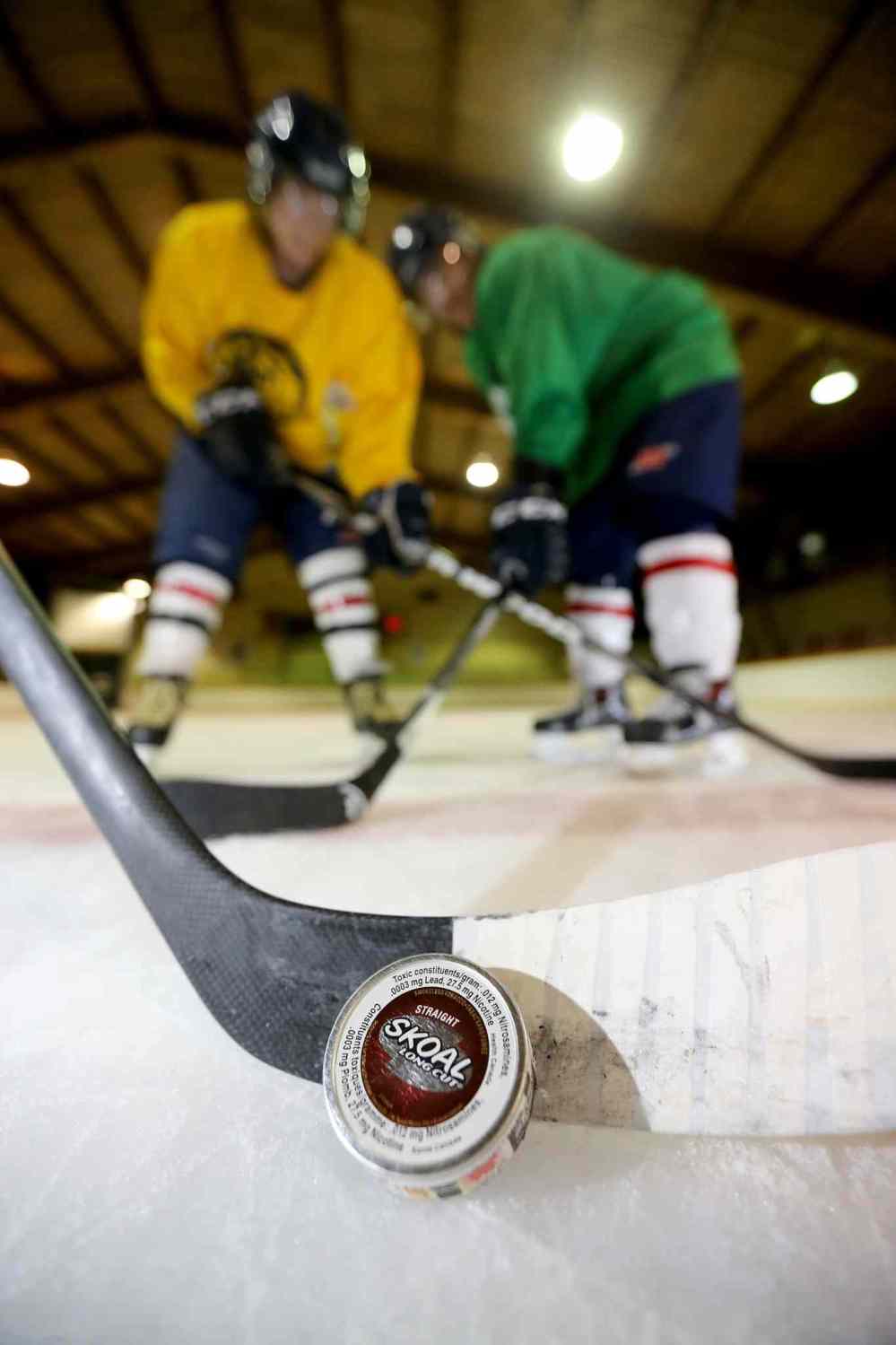
Right now, the hockey player is sitting on the bench while his teammates fly about the ice during a recent practice. He doesn’t want his name used, which is fair enough. After all, none of the several Winnipeg Jets who use smokeless tobacco wanted to speak on the record for this story, either.
“You’re surrounded by it so much,” the player explains. “You walk into a room and all the guys are doing it. So you think, ‘Why not?’ It’s just part of my lifestyle, I guess. But it is a drug, pretty much like alcohol.”
You can’t see it, most times. You can’t smell it. And it’s very difficult to quantify. But hockey has a tobacco problem that has seeped into the culture of the sport — from kids as young as 13 to grizzled NHL professionals.
Although tobacco has been a part of hockey for years, there is a fear among experts, coaches and administrators that the age of introduction is dropping — unbeknownst to many unsuspecting parents.
After all, you enrol your kids in hockey to keep them away from hanging out smoking at the Sev, right? Get them involved with a healthy, active lifestyle. And that’s mostly true.
But here’s the ironic part: The better the young player, the higher he rises in the hockey food chain through minor to AAA to junior, and the more likely he (or she, for that matter) will be exposed to a pinch of this or a chew of that. In the pros, they like to use “snus,” which is basically a tea bag full of tobacco that is a little cleaner but less of a hit. Or just a straight gum-full of Copenhagen or Skoal.
Most parents, and most fans, wouldn’t realize not only does a star Jets player like Dustin Byfuglien partake in smokeless tobacco, but so do half of the players in the Manitoba Junior Hockey League. So do up to 40 per cent of the University of Manitoba Bisons. So do about half of the Transcona Railer Express — who are no better or worse for numbers than any MMJHL team.
“It’s alarming,” says Peter Woods, executive director of Hockey Manitoba. “It seems to be a substitute for cigarettes. Kids are taking this and not recognizing the dangers. It’s very addictive. It’s very difficult to get off.”
Back on the bench, the 20-year-old who began with a pinch and now consumes a tin of Skoal a day admits the loss of gum under his front lip is concerning. So he started putting the tobacco in his left cheek. Yes, it did give him pause to quit.
“But I couldn’t just quit like that,” he adds. “Slowly. I’ve thought of it (quitting) for sure. Lately? No.”
Then he’s over the boards and onto the ice. Gone, like a puff of smoke.
At the beginning of every Manitoba Junior Hockey League season, each team is mandated to attend a session conducted by Dean Kriellaars, a professor in the School of Medical Rehabilitation at the University of Manitoba.
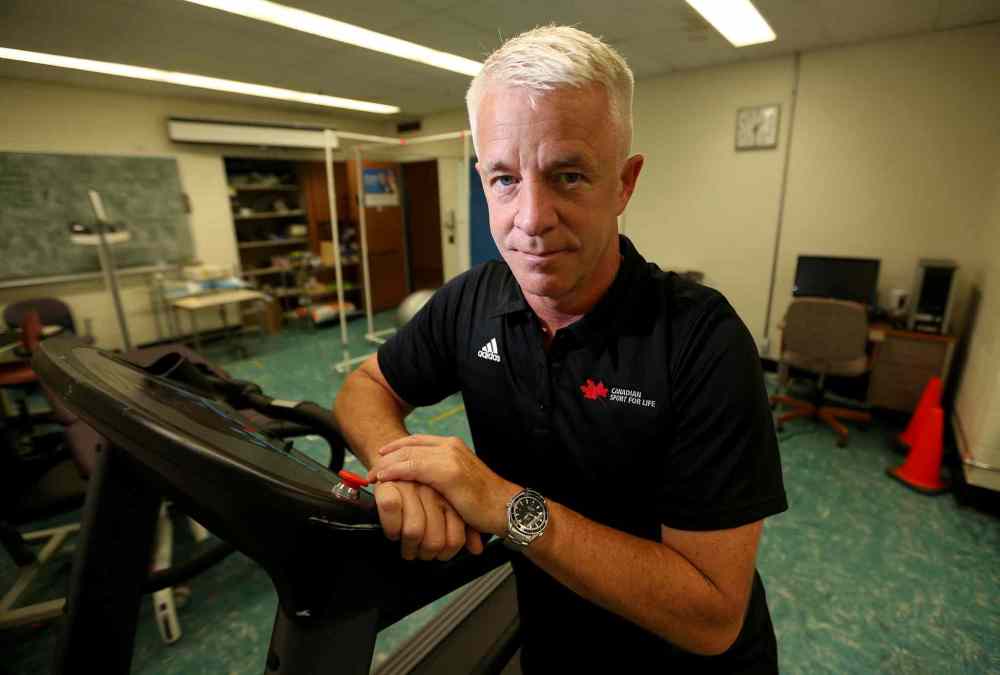
On this day, Kriellaars’ students in the basement of the Sport Manitoba headquarters on Pacific Avenue are the MJHL’s Steinbach Pistons, who have arrived in their game-day attire of suits and jackets.
But this is no game: Kriellaars will spend the next 90 minutes (sessions are usually longer, but the PowerPoint projector is on the fritz) coaching up the players on a gamut of health-related issues, including alcohol, drugs, sleep and diet.
When it comes to chew, there’s no reason to be coy. Kriellaars, who has worked with the MJHL for the past seven years, has conducted surveys, in conjunction with the Sport Medicine and Science Council of Manitoba, which reveal 50 per cent of all MJHL players regularly use smokeless tobacco. Upwards of 75 per cent have tried tobacco at some point.
“The virus then gets infected into the team,” Kriellaars says.
Kriellaars tries his best to keep the presentation light. He’s not preachy. But one of his commandments, when it comes to tobacco, is he asks players to look in a mirror — not to ask themselves about rethinking an unhealthy habit but, more importantly, to check for the telltale signs of smokeless tobacco use, which include white lines or dots appearing on the insides of lips and gums.
These lines and dots represent a change in the cells that can lead to cancer, Kriellaars notes, matter-of-factly. By the numbers, about 60 per cent of the users will experience the change. Two of them will get cancer in between one and 10 years, he advises.
Two Pistons players, 19-year-old Kerry McGlynn and Brendan Hopkins, 19, use chewing tobacco.
“It helps me concentrate,” said McGlynn, who is from St. Louis.
McGlynn took his first chew when he was around 15, even though it was forbidden on his team in the States. “We found a way to get around coaches,” he shrugged. “Just put it further back in your mouth.”
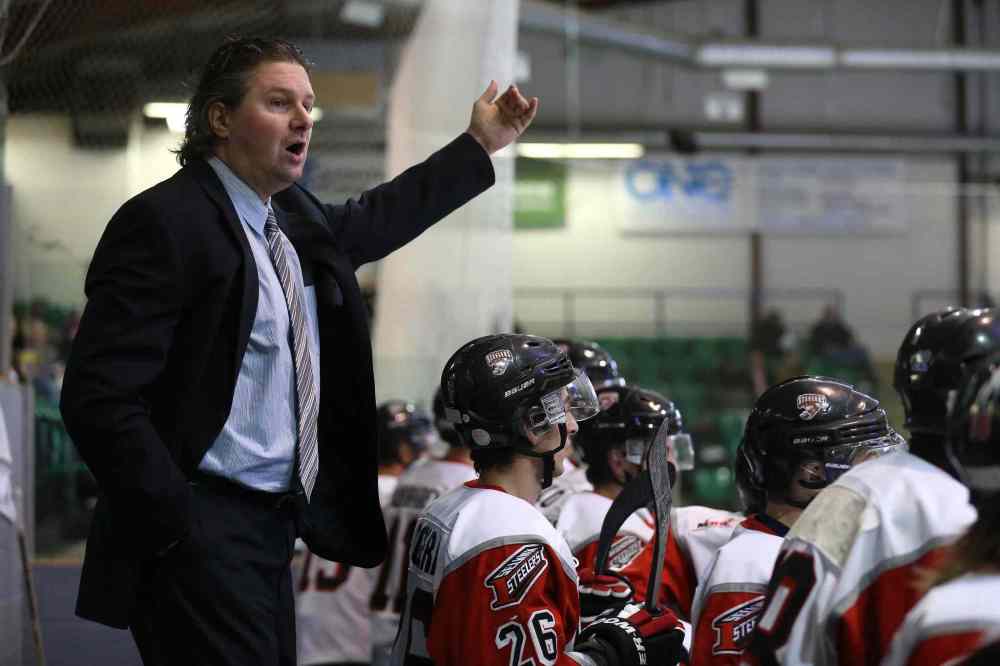
In fact, McGlynn said the vast majority of kids on his minor hockey teams used smokeless tobacco. (It should be noted that in the U.S., tins of tobacco can be bought for $3, compared to over $20 in Canada.)
“When you start playing junior hockey you get so bored on bus trips,” he said. “It’s just something to do. I should have stuck with seeds.”
Hopkins, from Calgary, recently quit using tobacco for “four or five months”, only to start again. “It’s just the way it is,” he explained. “In junior hockey, you can’t escape it. It’s bus trips. It’s in the room. It’s another way of bonding, hanging out with the guys.”
The MJHL’s Winnipeg Blues head coach, Don MacGillivray, estimates that some 40 per cent of his players indulge in tobacco, which is no longer allowed in the Blues dressing room. Same goes for the Selkirk Steelers.
“I know a lot of our players in our league and on our team use tobacco,” said Steelers head coach Ryan Smith. “It’s in the culture. I don’t have the answer to get rid of it. I really don’t.
“It’s like smoking. It’s addictive. Some of the kids are addicted. I’m not going to say they couldn’t function without it, but it’s part of their daily routine, like brushing their teeth.”
Steelers veteran Damian Wallack, 19, was introduced to smokeless tobacco while on a road trip to the States with his buddies when he was 15 years old. He estimated that while he was a member of the Interlake AAA midget team, between 7-10 players (almost half) used dip.
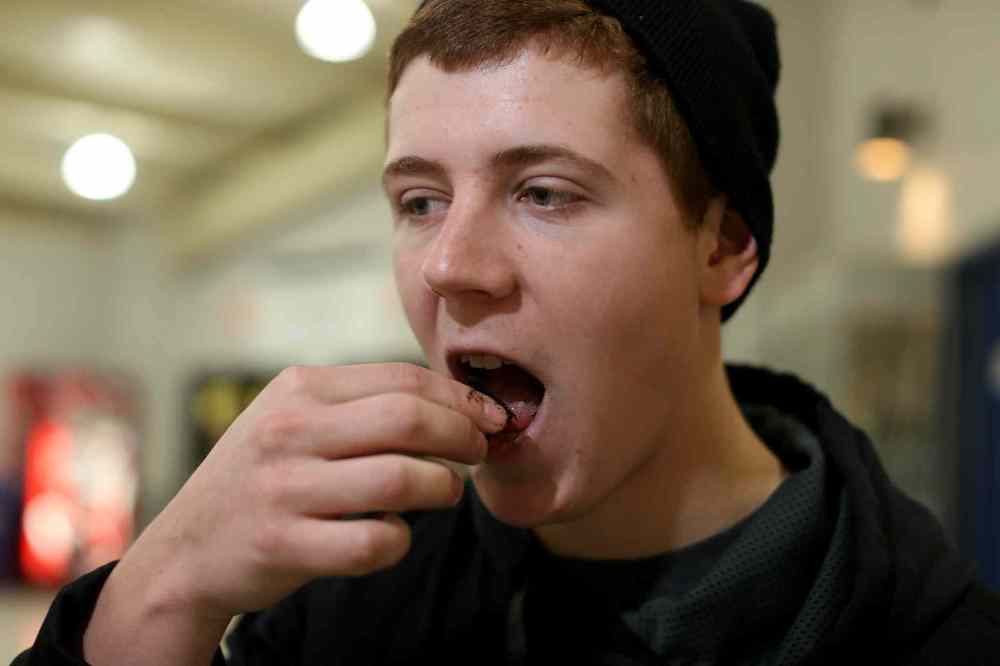
Wallack has been cutting back his tobacco use to just “a pinch a day” now, he said. His desire to reduce was the direct result of one of Kriellaars’ presentations. “I thought, ‘I gotta cut back’,” Wallack said. “For sure, he (Kriellaars) lets you know what can happen to your gums, your teeth.”
Like so many other junior players, Wallack pointed to boredom as the main reason for his dalliance in what he calls an “expensive and bad habit.”
“You get bored more than anything,” he said. “On bus trips you’ve got nothing better to do but talk to your friends and watch movies. (But) It’s pretty hard to quit when you’ve been doing it for over three years. I’m trying to cut back so I can make my way to quit.”
For the record, if you think tobacco use is just a “junior hockey thing”, the number of players on the University of Manitoba Bisons who use smokeless tobacco has historically mirrored use at junior levels.
“Unfortunately, I’d say it’s quite common,” Mike Sirant, head coach of the Bison’s men’s hockey program. “More common than I’d like to see.”
Sirant said tobacco is outlawed at Bisons functions, games and practices. “I think our players know where I stand,” Sirant said. “But what they do away from the rink… they’re 25, 26 years old.”
However, what really concerns Kriellaars is not just that tobacco use has metastasized into the sport’s culture, but how the age of introduction appears to be dropping — without the corresponding emphasis on education and awareness.
For example, Kriellaars is happy to conduct his MJHL seminars, but openly concedes they occur about four years too late. After all, coaches like Smith and MacGillivray — and Sirant, too — aren’t handing out tins of Copenhagen to rookies as they walk in the dressing room door. Almost without exception, the recruits have been exposed to, or using, tobacco prior to ever getting to junior level.
Kriellaars’ study pegs the average starting age at 15, and said that parents don’t usually become aware of their child’s usage until after two years.

Consider this quote from MacGillivray: “They typically don’t start here. They’ve started at school or midget hockey or whatever. We have more guys trying to quit than trying to start, if that makes any sense.”
MJHL commissioner Kim Davis refers to the amount of younger players using tobacco as “scary”.
“The attitude towards it is too laissez faire,” Davis said. “And I don’t know if it’s ignorance or not knowing? But if people knew, I think most of them would do something. This isn’t an MJHL issue solely. When players come to this league they’re already using the stuff. In some cases, they might be addicted. That’s what we’re trying to prevent. So what can we do to help them?
“As commissioner I think we’re doing as much as we can in educating the players about the issue,” he added. “It’s clear to me there has to be some sort of intervention much earlier in the process. The problem is this isn’t a hockey issue. It’s got nothing to do with X’s and O’s and learning how to make a pass, which is where most of the focus is. Having said that, there’s an issue here and you can’t ignore it. You have to do something.”
Sure, but how do you confront an issue that so few people in minor hockey — including parents — admit to seeing?
The grey area of tobacco use among youth in hockey isn’t hard to find. In almost every exception, administrators and coaches at junior and university levels will admit there’s a problem that begins long before the players reach their door.
At the same time, administrators and coaches at minor hockey levels, almost unanimously, will tell you tobacco use among their players is non-existent — at least from their vantage point.

Russ Cassidy, president of Winnipeg AAA Hockey (13 to 17-years old), takes issue with the concept that most minor hockey players are using tobacco before they reach the junior level.
“That’s the story junior teams want to put out there,” Cassidy said. “I’m not sure where that comes from. They say it’s coming from midget teams. I can’t say I’ve seen it personally.
“We don’t have use for these types of products. Dealing with young athletes, we want them going down the right path.”
Cassidy wasn’t alone. Of the several minor hockey coaches and administrators interviewed for this story, most echoed similar views.
“I don’t know of any of our guys for years who’ve used it at this level,” offered Paul Krueger, head coach of the Midget AAA Winnipeg Wild since 2003. “I haven’t had anybody I’ve suspected or caught using smokeless tobacco.”
Krueger said it’s “entirely possible” a player could use tobacco away from the rink, but he said the punishment for getting caught is a possible suspension and a notification to parents.
“We would address it right away,” he said. “That’s something we wouldn’t turn a blind eye to, that’s for sure.”
Still, ask any junior player who has come through the AAA system if younger players use tobacco and the answer is a resounding, “Duh. Of course.”
Said Wallack: “It happens a lot more than people say.”
To Kriellaars, the disparity between the two opposing views is easily explained: At 15, when tobacco use can lead to discipline or suspension, the habit is driven underground. Out of sight. Not unlike any activity teenagers don’t want their parents to know they’re doing.
“Why would the athletes expose the coaches to that, at that level,” Kriellaars said. “There’s nothing to gain, something to lose.” Once over 18, Kriellaars added, “players don’t typically hide the fact that they use smokeless tobacco.”
Barb Tascona, facilitator with Students Working Against Tobacco (SWAT), believes tobacco use by young hockey players has been “flying under the wire” for several years. This dates back to the days she taught high school at West Kildonan Collegiate and discovered that all of the “hockey boys” in her Grade 10 class were spitting tobacco juice into cups — in her classroom.
“It’s very insidious because you have no idea,” Tascona said. “It’s not like they’ve got a big wad of tobacco in their mouth and they’re chewing.”
As to why smokeless tobacco has taken root among young males in elite sports, Tascona said, “If if becomes the norm, everybody does it. I think parents would be shocked because they’re looking at it (sports) as an opportunity for them (kids) to be in a healthier environment, right?”
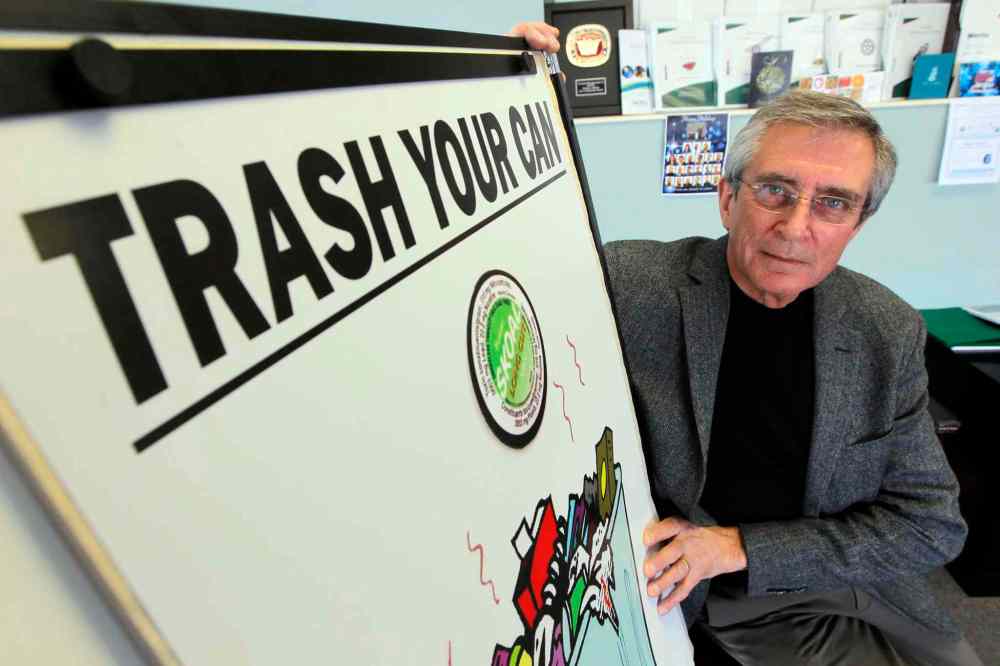
Statistics show that only about four per cent of Canadians regularly use smokeless tobacco. Among that group, 24 percent are between the ages of 15-19, 22 per cent are between 20-24 and the remainder (over 50 per cent) are 25 and older.
So why do 10-12 players on any given elite hockey team — NHL clubs included — have a tin of tobacco in their back pocket?
“Once it gets into a team it moves fairly quickly through the team. It becomes the “in” thing to do,” said Murray Gibson, executive director of MANTRA (Manitoba Tobacco Reduction Alliance). “That’s where we need to concentrate our efforts and find out why it’s happening to such a large degree.”
Kriellaars’ awareness efforts to spread education outside of the MJHL are gaining some traction. Hockey Manitoba now offers smokeless tobacco education pamphlets entitled, Watch Your Mouth! to parents at coaches clinics and Bantam (under 15) camps.
In southwestern Manitoba, Tara Smith, the health promotion coordinator for the Prairie Mountain Regional Health Authority, has started to spread Kriellaars’ findings to coaches, administrators and parents in rural Manitoba.
Finding an audience hasn’t always been easy, Smith said.
“Just getting in there sometimes is a challenge if you’re not part of the (hockey) circle,” she said. “I wouldn’t say resistance. More of a nonchalant attitude, that other things come first. These things take time.”
However, just recently Smith was able to make a presentation to the Manitoba AAA Midget coaches and executives in Brandon. For the league’s commissioner, Greg Thompson, it was an eye-opening experience.
“It was a surprise,” said Thompson, who during his decades in minor hockey concedes he “never looked for it (tobacco use), never saw it, never suspected it. Especially in hockey.”
“The thing that surprised me was the percentage of kids who used it daily,” he added. “It was shocking to everybody. Nobody thought any of their players chewed. Obviously, from the stats a lot of players chewed. Even if the numbers are a bit off, it’s still ridiculous.”
Mike Gordichuk isn’t shocked. The head coach and GM of the MMJHL’s Transcona Railer Express has coached at all levels of hockey for 25 years and counting. Just last month he watched two 14-year-olds walk into a hockey arena with a chew in their mouths.
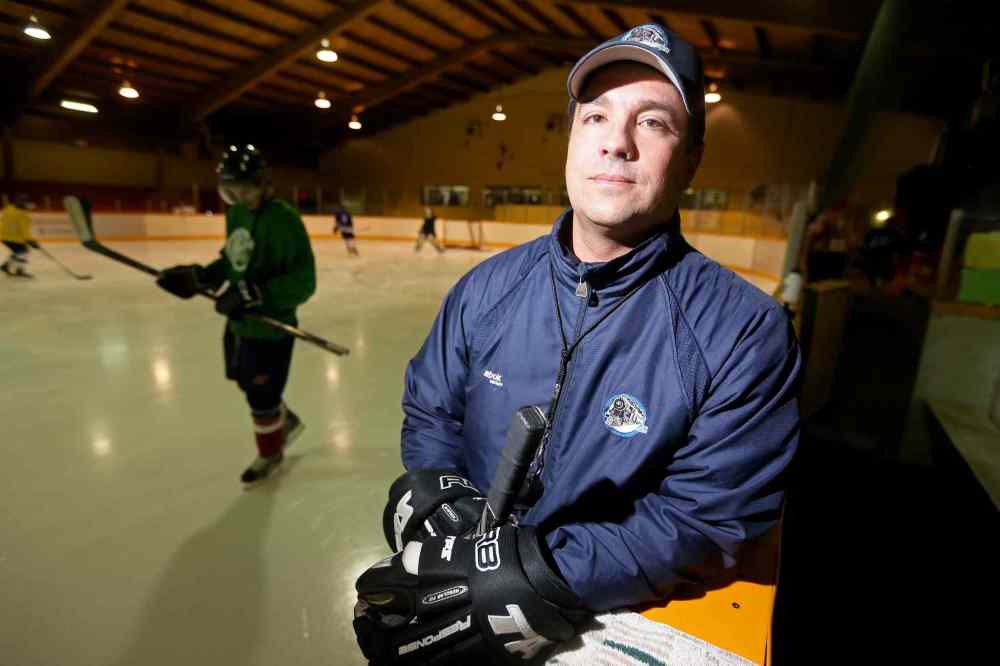
“I know kids doing it as early as the age of 13 or 14 doing it,” Gordichuk said. “I’ve seen it. It’s like smoking. A lot of parents don’t think their kids smoke but they’ve been doing it for five years. Just because you’re not seeing it doesn’t mean they’re not doing it, right?
“It’s becoming a bit of an epidemic,” he added. “It was around back then (10-20 years ago), but I don’t remember seeing it like I see it now. And it was the older groups: 16, 17, 18 years old. Now you’re seeing it in the younger age groups.
“There’s that disbelief of younger kids that if you’re not smoking it’s not as bad for you. Some kids actually believe it’s a performance enhancer when actually it’s an inhibitor. It’s counteractive.”
Gordichuk doesn’t allow smokeless tobacco in his dressing room. But like most coaches, he has no control over its use outside of the arena.
“I know they could do it before or after but I just didn’t want it in the room. I find it disgusting. And I cannot fathom why anybody would want to chew that stuff. It’s a shame when these kids are hooked on it.”
And like several minor and junior hockey executives interviewed, Gordichuk cites the wide-spread use of smokeless tobacco by NHL players as a contributing factor.
“When they see an NHL player do it and it’s accepted by the NHL, they’re going to do it. If you could clean it up at the NHL level it would filter down,” he said. “There’s such a high respect from these kids, that’s what they’re aspiring to be, and they see guys like (Winnipeg Jets defenceman) Dustin Byfuglien do it, to them that’s OK.”
Commissioner Davis concurred, also citing Byfuglien — who in the past has done TV interviews with a wad of chew in his mouth — and the likes of Detroit Red Wings’ Todd Bertuzzi and Washington Capitals’ superstar Alex Ovechkin.
“That just pisses me off, and I don’t mind saying it,” Davis fumed. “It’s the height of arrogance to go out publicly in the role of a professional hockey player who like it or not is looked upon as a role model. They make darn sure to get the right hat on, or the right shirt on, with the right logo for their sponsor. So why can’t they just take that crap out of their mouth? I don’t get that. It drives me nuts.”
If it’s any consolation, it probably drives the Jets’ front office nuts, too. At least the folks who have to take the irate calls from parents and fans every time a member of the team does a broadcast interview with what is obviously a wad of tobacco in his mouth.
Although obviously sensitive about the subject, Jets senior director of communications Scott Brown told the Free Press that “more than a few” members regularly use smokeless tobacco. No player approached by the team wanted to speak to this subject on or off the record.

“We’re prefer that they not use tobacco,” Brown said. “We make that very clear at the beginning of the season. Much the same way that we’d prefer them to wear their hats forward, that we’d prefer them to wear shirts (for broadcast interviews). At the same time we understand they are grown adults and they can make their own decisions. In the end it’s a private decision for their private life. That is something that we as a hockey team have no control over.
“It’s the same reason we don’t ban players from using Twitter. They need to make their own decisions. Sometimes they make the wrong ones and we’ll work with them so they don’t make those decisions again.”
“But when they get in front of the camera, now we’re dealing with the public perception and the community,” Brown added. “And I’m a little sensitive to the fact this may not be the most popular choice. So I ask them to cooperate with me a little bit. And for the most part I’d say 90 to 95 per cent of the time they do. Once or twice a player gets caught in a situation where he doesn’t have the time to take it (tobacco) out or forgot.”
Brown said doctors representing both the NHL and NHLPA — the players’ association — visit each team to hold seminars on several health related topics, including tobacco use.
Asked specifically about criticism that NHL stars who use tobacco encourage young players who emulate them to pick up the habit, Brown replied: “We understand that opinion. That’s one of the reasons we work with the players so they’re not using it on camera.”
For the record, not one of the junior players interviewed this story said they were influenced by any NHL players. Said one player: “We didn’t even have an NHL team here when I started.”
Wallack agreed, saying his decision to put that first pinch of tobacco in his mouth was more about being one of the then 15-year-old guys. And hockey didn’t help.
“It’s definitely something I wish I didn’t start,” he said. “But it’s so hard to get out of.”
Then Wallack said something that perhaps best encapsulates a sport and its bad habit.
“I always told myself,” the 19-year-old concluded, “that once I’m done hockey, I’ll quit chewing tobacco.”
The facts

Smokeless tobacco (chew, snuff, snus) users start as early as Grade 7. The average age of first exposure is 15.
Most parents don’t know their child uses chew until two years after they started.
A user of smokeless tobacco consumes about 1-2 tins a week.
Nicotine acts as a stimulant and is addictive.
Chew delivers more nicotine than cigarettes.
Chewing tobacco is kept in the mouth for many hours (60 minutes equals eight cigarettes). The high nicotine levels make quitting very difficult.
Smokeless tobacco use is associated with gum disease, the development or oral cancer and tooth decay. At least 28 chemicals in smokeless tobacco have been found to cause cancer.
By the numbers
1 per cent: Canadians who currently use smokeless tobacco
16 per cent: Canadian youth between the ages of 15 to 19 who are users
19 per cent: Boys in Grade 12 who have tried using, while 7.3 per cent are currently using
33 per cent: Smokeless tobacco users who are under the age of 25, with higher prevalence in the western provinces
The Sport Medicine and Science Council of Manitoba surveyed 2,000 athletes 12-21 years of age regarding substance use. The survey found the highest prevalence of smokeless tobacco use among males in:
• Baseball (54%)
• Hockey (52%)
• Rugby (38%)
• Football (23%)
Grade 9-12 youth who participated in sports teams had nearly doubled odds of trying smokeless tobacco.
Where to get help
Quitting is best done in the off-season. Various supports like Champix or nicotine patches are available and have been helpful to some people quitting smokless tobacco. Do not be confrontational with the youth — they need support to quit. Talk with your dentist, doctor or pharmacist for help.
Any user must see their dentist regularly to check for signs of oral cancer.
Tips for parents, coaches
If your child participates in sports such as baseball, hockey, football, bandy or rugby, the likelihood of trying chew is very high — up to 75 per cent try it. Its use is almost exclusively limited to males.
In hockey and baseball, chew use starts as early as 12. On the 16-and-older teams, about 50 per cent are using it.
Talk to your child about smokeless tobacco yearly.
Most athletes start using because:
• They were bored on a road trip
• It seemed like the thing to do in sport / to create a sense of bonding and fitting in
• They succumbed to peer pressure
• Many pro athletes chew tobacco and the young athlete may view this as permission.
— source: Watch Your Mouth!, a pamphlet the Hockey Manitoba gives to parents/coaches at coaches clinics and bantam registration.

Randy Turner
Reporter
Randy Turner spent much of his journalistic career on the road. A lot of roads. Dirt roads, snow-packed roads, U.S. interstates and foreign highways. In other words, he got a lot of kilometres on the odometer, if you know what we mean.
Our newsroom depends on a growing audience of readers to power our journalism. If you are not a paid reader, please consider becoming a subscriber.
Our newsroom depends on its audience of readers to power our journalism. Thank you for your support.
History
Updated on Saturday, December 28, 2013 2:23 PM CST: Corrects typos

